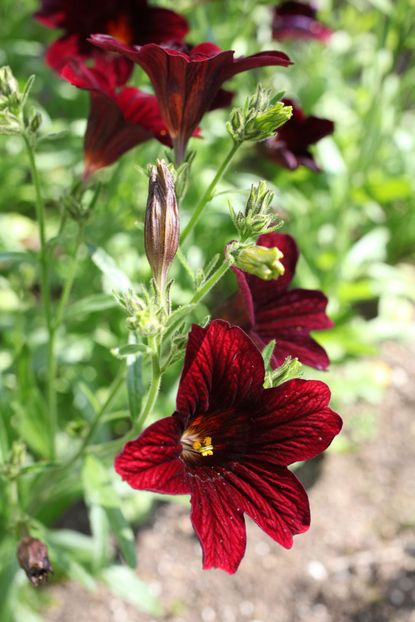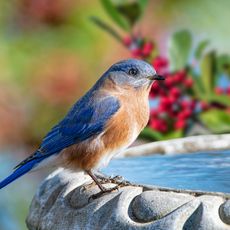Salpiglossis Care: Tips On Growing Salpiglossis From Seed


If you're looking for a plant with lots of long-lasting color and beauty, then the painted tongue plant may just be the answer. Never mind the unusual name; its appeal can be found within its attractive blooms. Read on to learn more about this plant.
Salpiglossis Plant Info
Painted tongue plants (Salpiglossis sinuata) are upright annuals with trumpet-shaped, petunia-like blooms. Painted tongue plants, which sometimes display more than one color on a single plant, come in various shades of red, reddish orange, and mahogany. Less common colors include purple, yellow, deep blue, and pink. Salpiglossis flowers, which are perfect for cut flower arrangements, can be even more spectacular when planted in groups. Salpiglossis plants reach a mature height of 2 to 3 feet (61-91 cm.), with a spread of about one foot (31 cm.). This South American native loves cool weather and blooms from spring until the plant begins to fade in midsummer. Salpiglossis often produces a late-season burst of color when temperatures drop in autumn.
How to Grow Painted Tongue
Plant painted tongue in fertile, well-drained soil. Although it benefits from full to partial sunlight, the plant won't bloom in high temperatures. A location in afternoon shade is helpful in hot climates. You should also provide a thin layer of mulch to keep the roots cool and moist.
Growing Salpiglossis from Seed
Plant Salpiglossis seeds directly in the garden after the soil is warm and all danger of frost has passed. Sprinkle the tiny seeds on the surface of the soil, then, because the seeds germinate in darkness, cover the area with cardboard. Remove the cardboard as soon as the seeds sprout, which usually takes two to three weeks. Alternatively, plant Salpiglossis seeds indoors in late winter, about 10 to 12 weeks before the last frost. Peat pots work well and prevent damage to the roots when the seedlings are transplanted outdoors. Cover the pots with black plastic to provide darkness until the seeds germinate. Water as needed to keep the potting mix slightly moist. If you don't relish the idea of planting seeds, look for this plant at most garden centers.
Salpiglossis Care
Thin Salpiglossis plants when the seedlings are about 4 inches (10 cm.) tall. This is also a good time to pinch the tips of young plants to encourage bushy, compact growth. Water this drought-tolerant plant only when the top 2 inches (5 cm.) of soil are dry. Never let the soil become soggy. Twice monthly feeding with a regular, water-soluble garden fertilizer diluted to half strength provides nutrition the plant requires to produce blooms. Deadhead spent blooms to promote more blooms. If necessary, tuck a wooden stake or branch into the soil to provide extra support. Salpigloss tends to be pest-resistant, but spray the plant with insecticidal soap if you notice aphids.
Gardening tips, videos, info and more delivered right to your inbox!
Sign up for the Gardening Know How newsletter today and receive a free download of our DIY eBook "Bring Your Garden Indoors: 13 DIY Projects For Fall And Winter".

A Credentialed Garden Writer, Mary H. Dyer was with Gardening Know How in the very beginning, publishing articles as early as 2007.
-
 Gifts For Bird Lovers, Birders and Birdies To Attract More Feathered Friends To Your Yard!
Gifts For Bird Lovers, Birders and Birdies To Attract More Feathered Friends To Your Yard!If you’re looking to bring more birdies to your garden, these gifts for bird lovers should definitely be on your wish list. Grab some avian attractions to get your gardens all aflutter
By Janey Goulding
-
 Elegant Exotics: 8 Beautiful Amaryllis Varieties That Will Brighten Any Holiday Display
Elegant Exotics: 8 Beautiful Amaryllis Varieties That Will Brighten Any Holiday DisplayWhether red, pink, white or variegated, the right amaryllis varieties can enhance any living space, especially during the holidays. We round up eight of the most exquisite
By Bonnie L. Grant